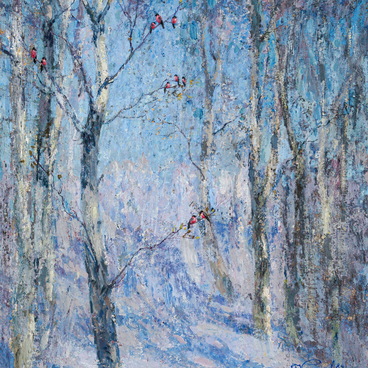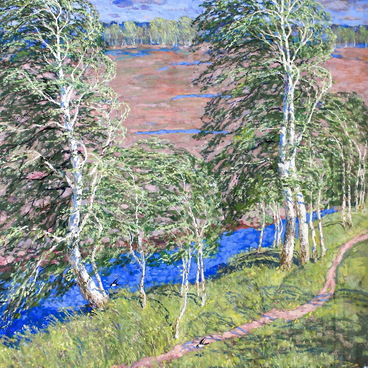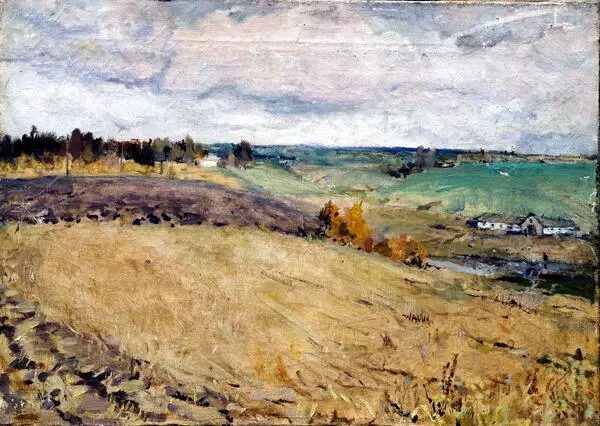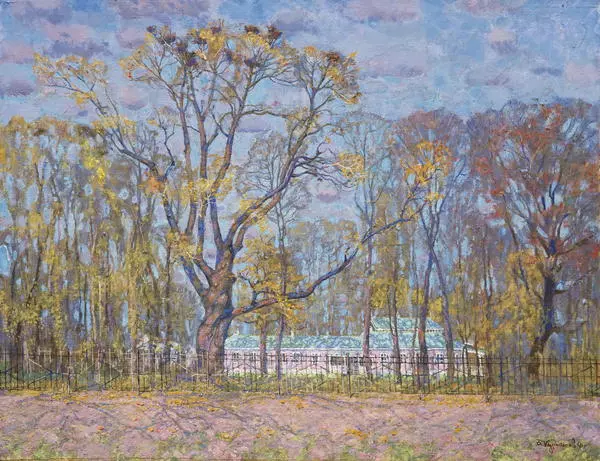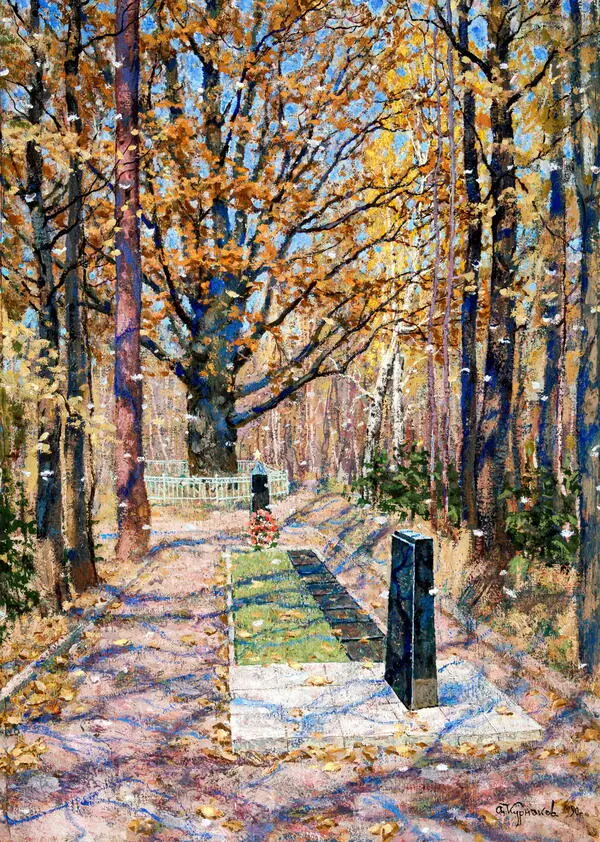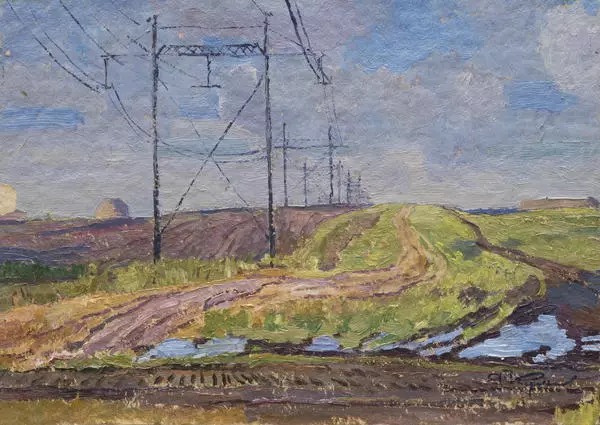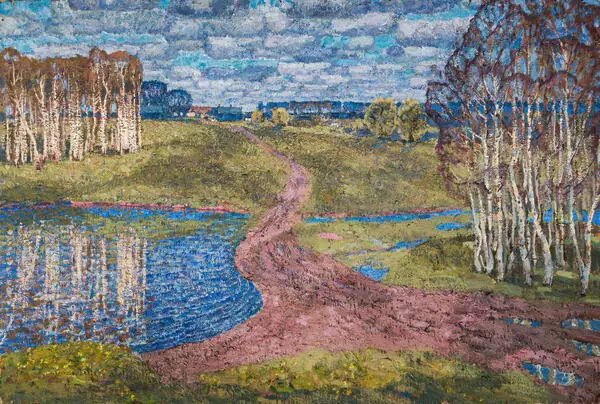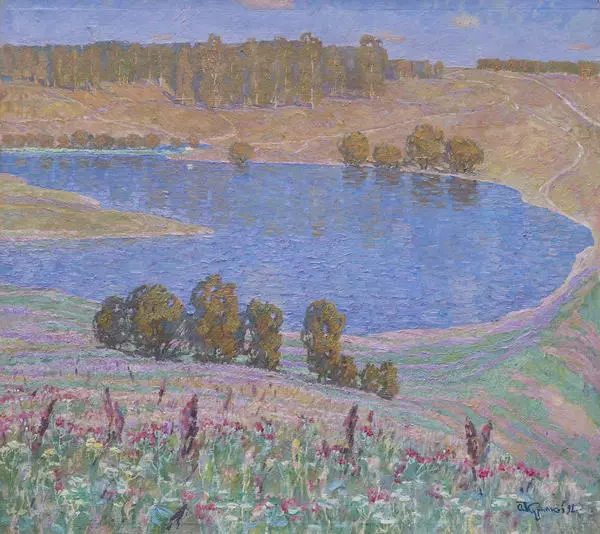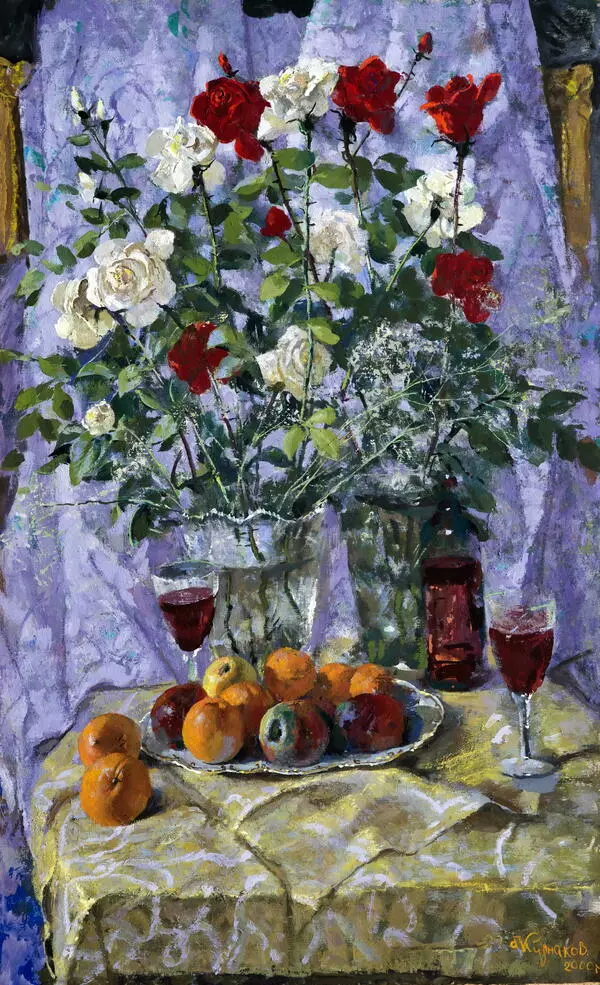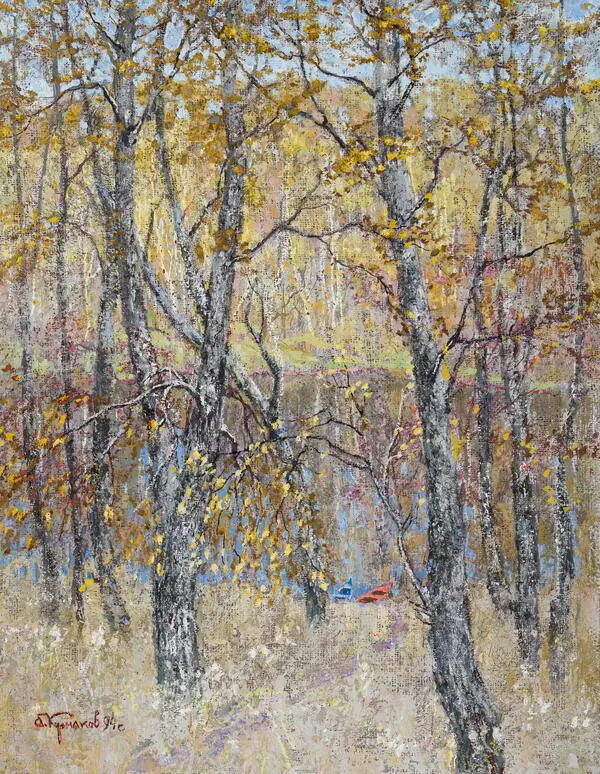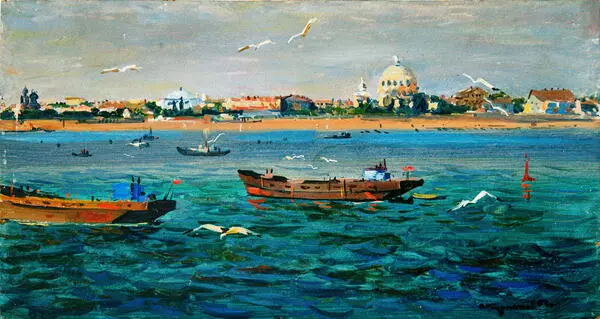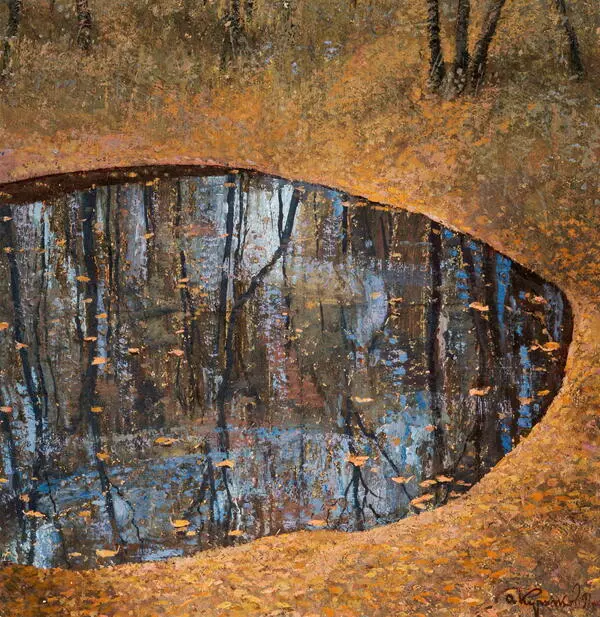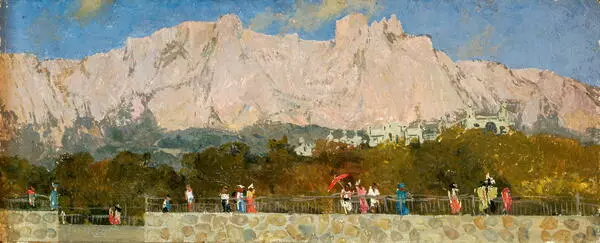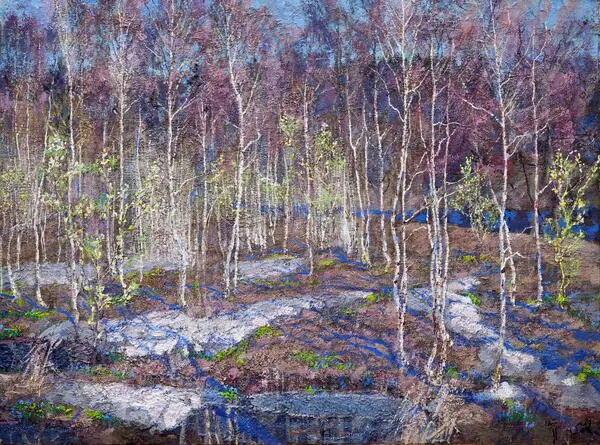The village of Kleymyonovo is located in the Mtsensk district of Oryol Oblast. It used to be the estate of the Shenshin landowners and was eventually inherited by the Russian poet with German ancestry Afanasy Fet.
Fet was also a translator and memoirist. He studied in Estonia, then at Moscow University. He was actively engaged in agriculture and wrote essays for agricultural magazines while remaining a subtle lyricist and sensuous poet.
The painting titled “Kleymyonovo Village” by the artist Andrey Kurnakov depicted Fet’s final resting place. The road leads to a five-domed brick church surrounded by trees. In the late 19th century, a new brick church designed by the Oryol architect Alexander Khimets was built on the site of the dilapidated Church of the Intercession of the Most Holy Mother of God in the village of Kleymyonovo. Behind the fence is an unlocked crypt — the burial place of Afanasy Fet (also known as Shenshin) and his wife Mariya Petrovna, née Botkina.
The depicted autumn day radiates silence and coolness. Snow is only seen in the hollows. The sun illuminates the bright blue sky with light pinkish clouds in the background. In the center of the composition is a slender red brick church. The autumn foliage of the birches casts a golden glow over the blue roof and domes of the church, emphasized by the colors of the sky and enveloped in a light lacy veil by the tree crowns. These tones bring air and serene movement to the picture.
Using a high horizon line is Kurnakov’s favorite technique that implies detailed outlining of the foreground. The painter manages to do that with success. His wide brushstrokes add volume to the faded grass. Having enough experience of observing the movement of shadows cast by trees, he intentionally organizes some extra pictorial space to render the dynamics of light lilac-blue shadows cast by the branches outside the picture. That same space is also helpful in creating the illusion of entering the picture and the church itself.
This painting is part of Kurnakov’s series called “Monuments of the Fatherland”.
Fet was also a translator and memoirist. He studied in Estonia, then at Moscow University. He was actively engaged in agriculture and wrote essays for agricultural magazines while remaining a subtle lyricist and sensuous poet.
The painting titled “Kleymyonovo Village” by the artist Andrey Kurnakov depicted Fet’s final resting place. The road leads to a five-domed brick church surrounded by trees. In the late 19th century, a new brick church designed by the Oryol architect Alexander Khimets was built on the site of the dilapidated Church of the Intercession of the Most Holy Mother of God in the village of Kleymyonovo. Behind the fence is an unlocked crypt — the burial place of Afanasy Fet (also known as Shenshin) and his wife Mariya Petrovna, née Botkina.
The depicted autumn day radiates silence and coolness. Snow is only seen in the hollows. The sun illuminates the bright blue sky with light pinkish clouds in the background. In the center of the composition is a slender red brick church. The autumn foliage of the birches casts a golden glow over the blue roof and domes of the church, emphasized by the colors of the sky and enveloped in a light lacy veil by the tree crowns. These tones bring air and serene movement to the picture.
Using a high horizon line is Kurnakov’s favorite technique that implies detailed outlining of the foreground. The painter manages to do that with success. His wide brushstrokes add volume to the faded grass. Having enough experience of observing the movement of shadows cast by trees, he intentionally organizes some extra pictorial space to render the dynamics of light lilac-blue shadows cast by the branches outside the picture. That same space is also helpful in creating the illusion of entering the picture and the church itself.
This painting is part of Kurnakov’s series called “Monuments of the Fatherland”.

